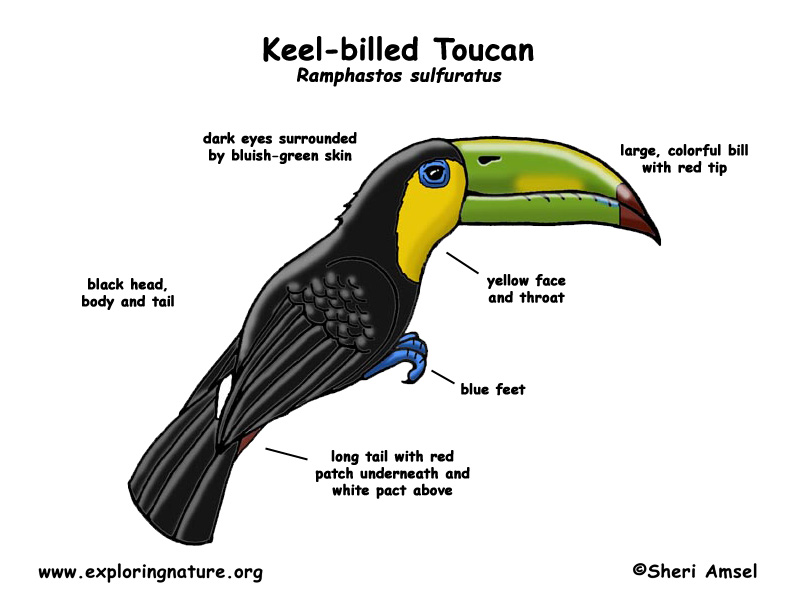

They are found in southern Mexico to northern South America.
They live in lowland forests and forest borders.
They have a giant bill, which is hollow but strong, to pluck fruit. They are a colorful bird with a black back, yellow chest, blue feet, and a green, red and orange bill.
They are a social bird and gather in flocks of 6 or more birds. They sleep (roost) in tree holes. They can flip up their tails to rest up along their backs so they can fit in smaller tree holes.
They eat fruit by snipping them off the tree and flipping its head back to gulp the fruit down. They also eat insects, lizards, snakes and bird eggs. They spit out the seeds, which helps to spread them.
They nest in tree holes. Females lay 1- 4 eggs. Both parents take turns warming (incubating) the eggs and feeding the chicks.
Kingdom: Animalia
Phylum: Chordata
Subphylum: Vertebrata
Class: Aves
Order: Piciformes
Family: Ramphastidae
Genus: Ramphastos
Species: R. sulfuratus
When you research information you must cite the reference. Citing for websites is different from citing from books, magazines and periodicals. The style of citing shown here is from the MLA Style Citations (Modern Language Association).
When citing a WEBSITE the general format is as follows.
Author Last Name, First Name(s). "Title: Subtitle of Part of Web Page, if appropriate." Title: Subtitle: Section of Page if appropriate. Sponsoring/Publishing Agency, If Given. Additional significant descriptive information. Date of Electronic Publication or other Date, such as Last Updated. Day Month Year of access < URL >.
Amsel, Sheri. "Toucan (Keel-billed)" Exploring Nature Educational Resource ©2005-2024. December 13, 2024
< http://www.exploringnature.org/db/view/Toucan-Keel-billed >

